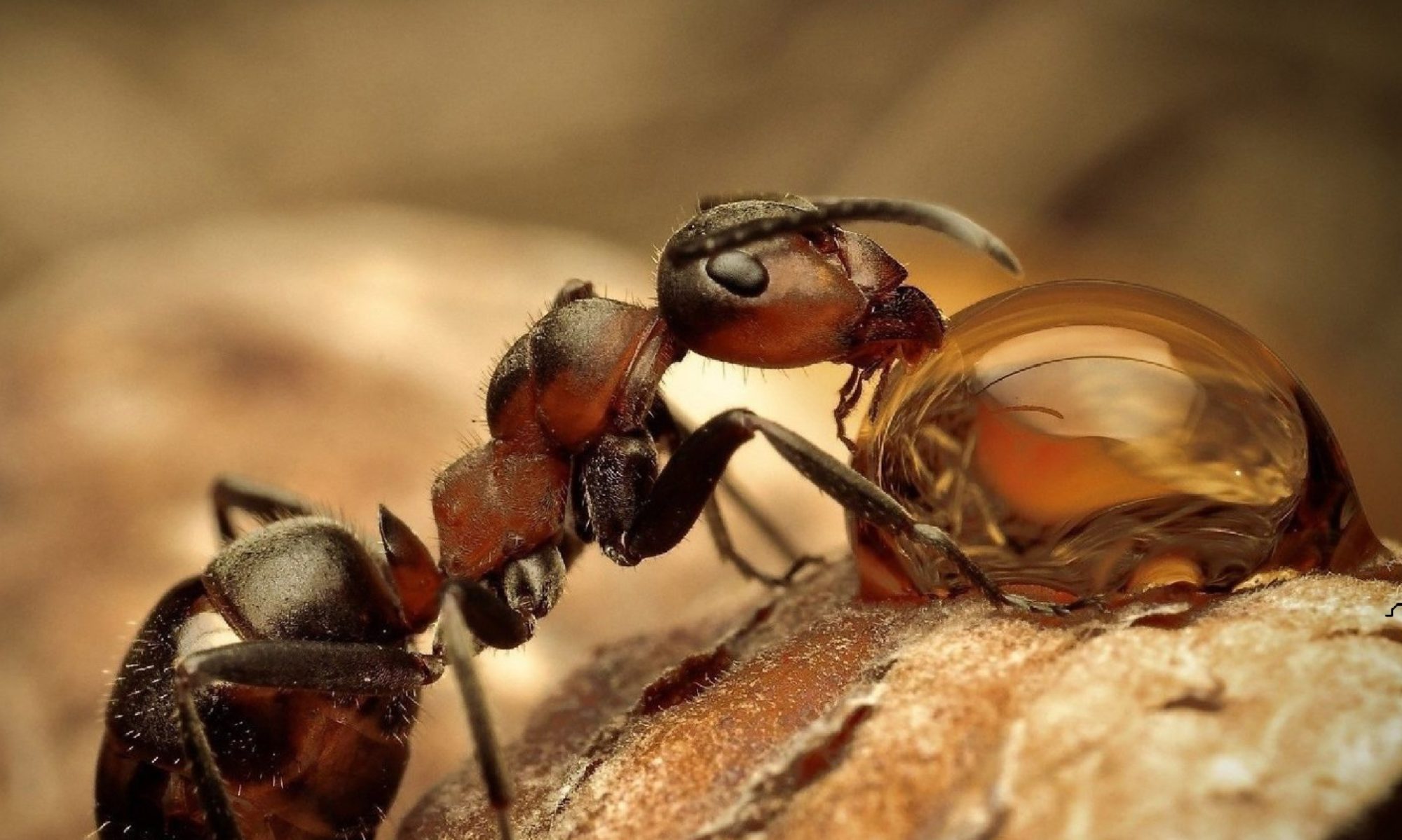The larvae of colony-making insects do much more than just sit around and grow. Although they don’t move around, they actually help the colony with various tasks. Larvae typically consume protein, either from seeds or from other insects. This protein is then digested, released by the larvae as a protein-rich liquid. This liquid then acts as a food source for the more mobile members of the colony. For the Asian giant hornet, larvae perform this task of turning the protein-paste into a liquid, as the adult hornets are unable to properly digest solid protein. In the case of the weaver ant, which makes their nests using tree leaves, larvae produce the silk which the ants use to glue together the tree leaves.
Jaws of Death
The trap-jaw ant is quite well known for its oddly-positioned mandibles. Stretching out 180 degrees, the jaws are razor-sharp and are lined with sensitive hairs. These hairs indicate to the ant to shut its jaws with incredible speed and strength, exerting a force 300 times the weight of the ant and reaching speeds up to 230 kilometers per hour (143 mph).
Despite the strength of their mandibles, trap-jaw ants have excellent control of their weapons. They’re able to not only carefully cut apart large prey but also delicately care for the precious larvae. These ants are also able to propel themselves short distances by placing their mandibles on the ground and shutting them shut.
Ants at Dawn
Commonly known as the dinosaur ant, the dawn ant is the most primitive ant species currently known to man. One of the stranger aspects of the dinosaur ant is that they will not attack dinosaur ants from other colonies. In species that are able to have multiple queens, this is due to the formation of a supercolony. However, in the case of the dawn ants, the queens have not paired/teamed together. This may be a due to a lack of specific pheromone production that most ant species have and allows dinosaur ants from different colonies to forage in the same area without confrontation. Secondly, the workers all gather food-products alone. In essence, each worker is a fully-geared hunter, ready to capture prey that may appear at a moments notice. This poses a problem in some cases, as lone foragers may find themselves in situations in which more than a single ant is required: enemy invasions or predators.
An interesting fact about the young queens and males is how the females have vestigial wings while the males have functioning ones. In order to reproduce with males of other colonies, young queens hang on vegetation and flutter their wings, releasing pheromones that attract males.
Jumping Jacks
Unlike the name of the title, this post isn’t about exercise. However, it is about ants! One of the more interesting and unique ants is the Myrmecia pilosula – commonly known as the jack jumper, jumper ant, or jumping jacks (hence the title). As its name suggests, this ant is able to jump, reaching distances from 3-4 inches. Not only are they packed with spring-loaded legs, they also have some of the most venomous stings in the insect world. The venom of jumper ants contains a variety of enzymes and peptides and is able to induce an extreme anaphylactic response from approximately 90% of people who are allergic to stings.
Lambs to the Slaughter
Honeypot ants are one of the most well-known ant species in the world. They are typically eaten as a delicacy by some people in Australia and are mainly characterized by some of the ants having engorged abdomens, almost like a balloon. Ants that have been chosen to be used as storage units are known as plerergates and are force-fed sugary liquids to expand their abdomens. The sugary liquid then starts to evaporate, leaving a honey-like substance in the abdomen of the ant. These ants later feed their sisters by regurgitating their contents when there is no food to be found on the surface.
